
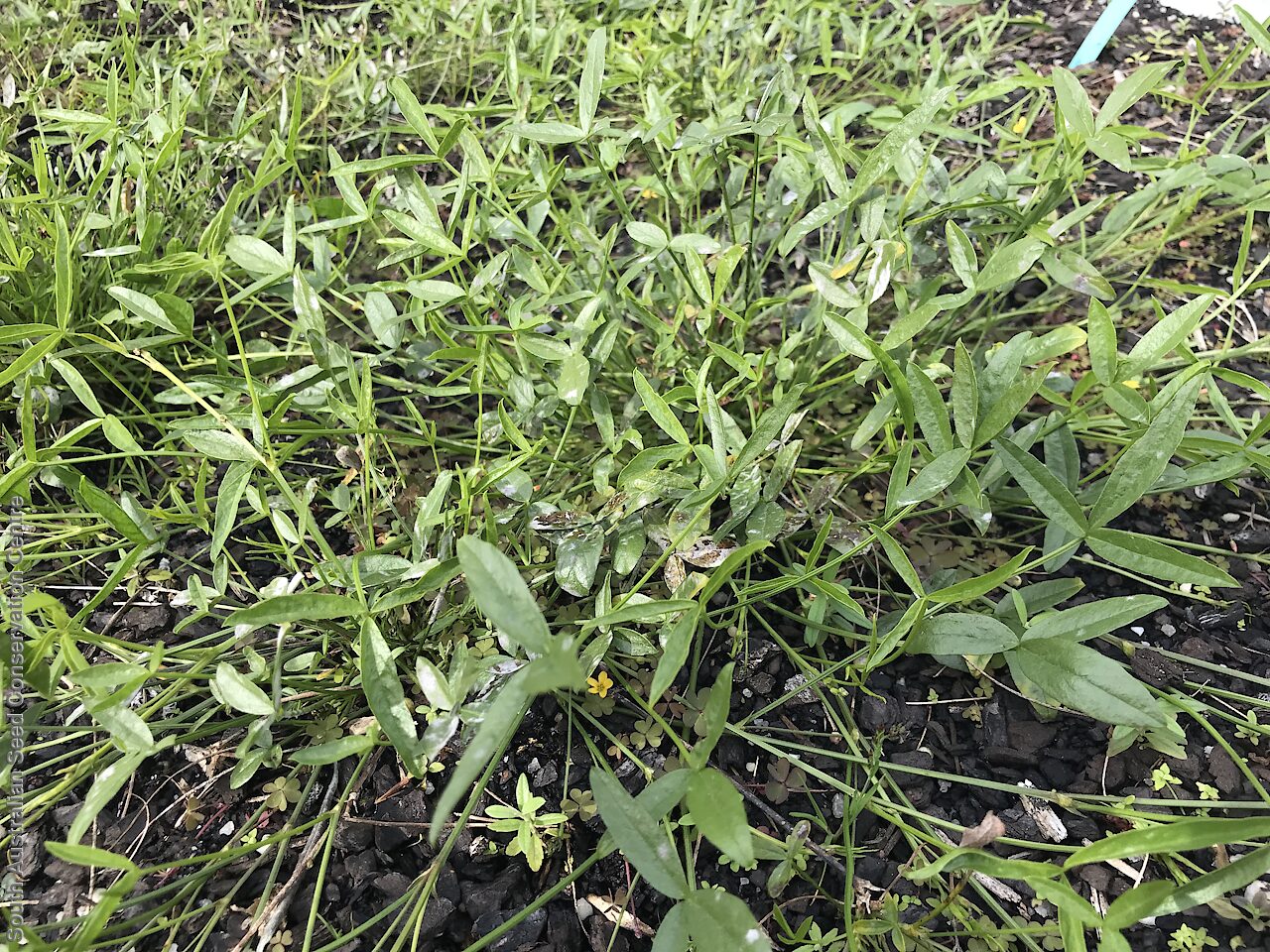
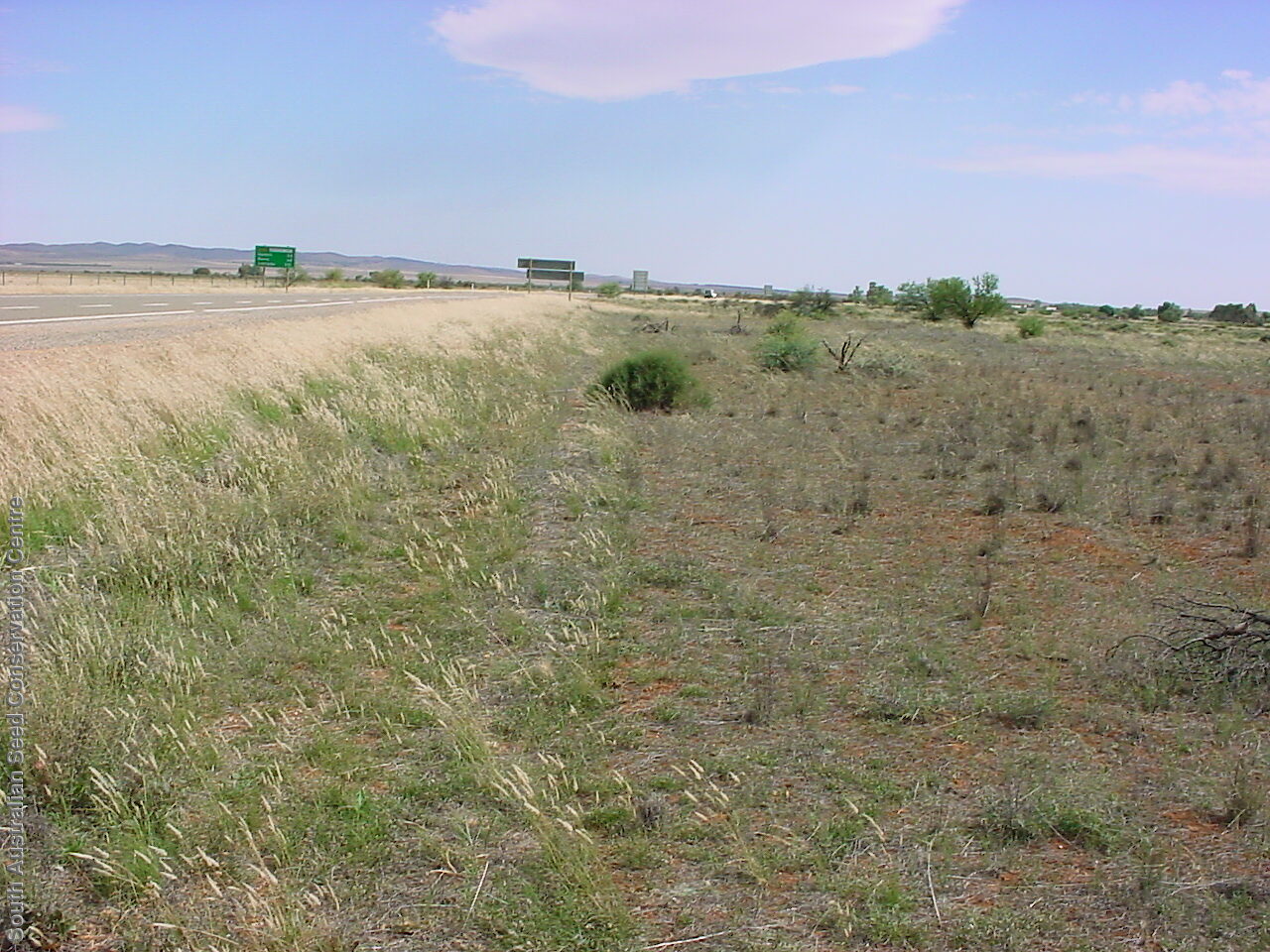

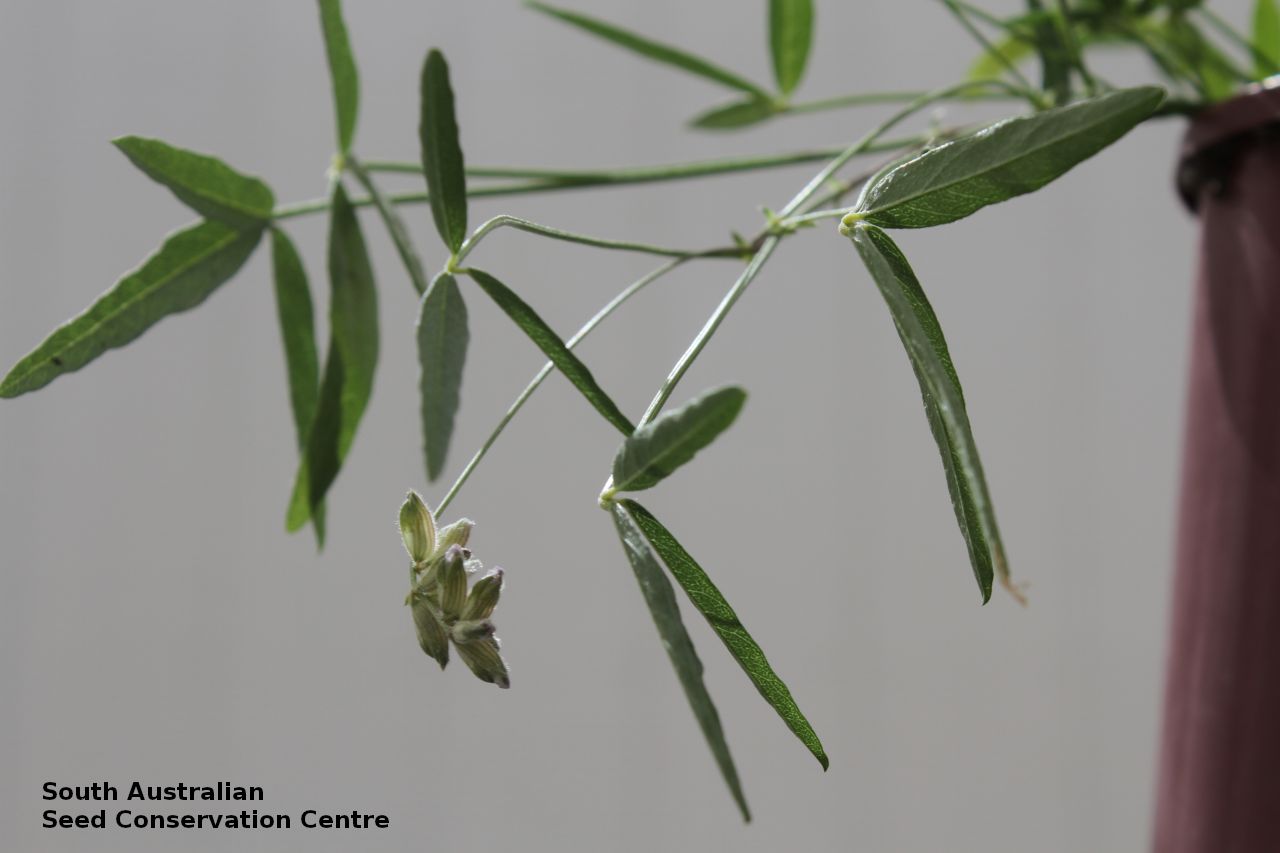
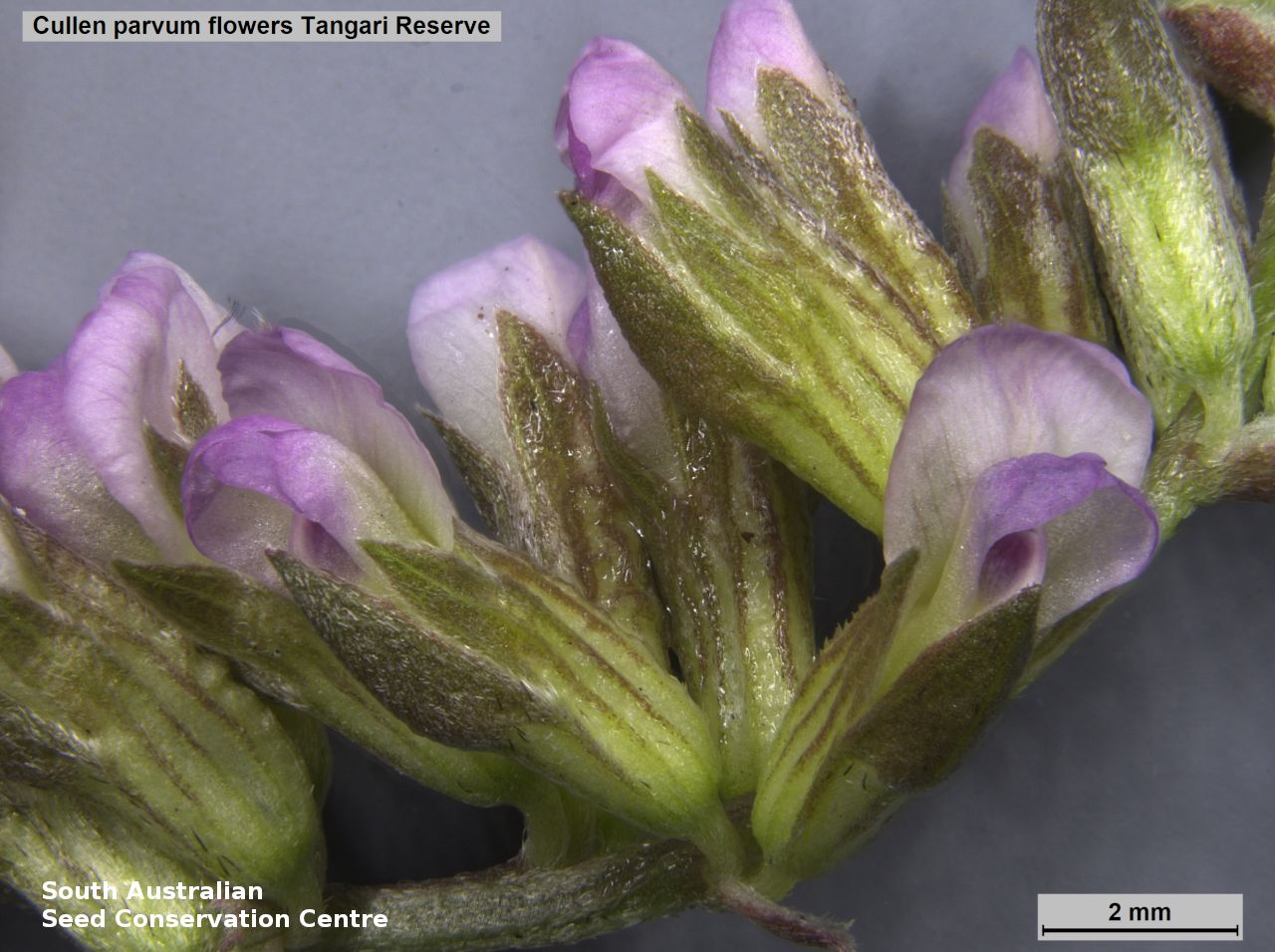
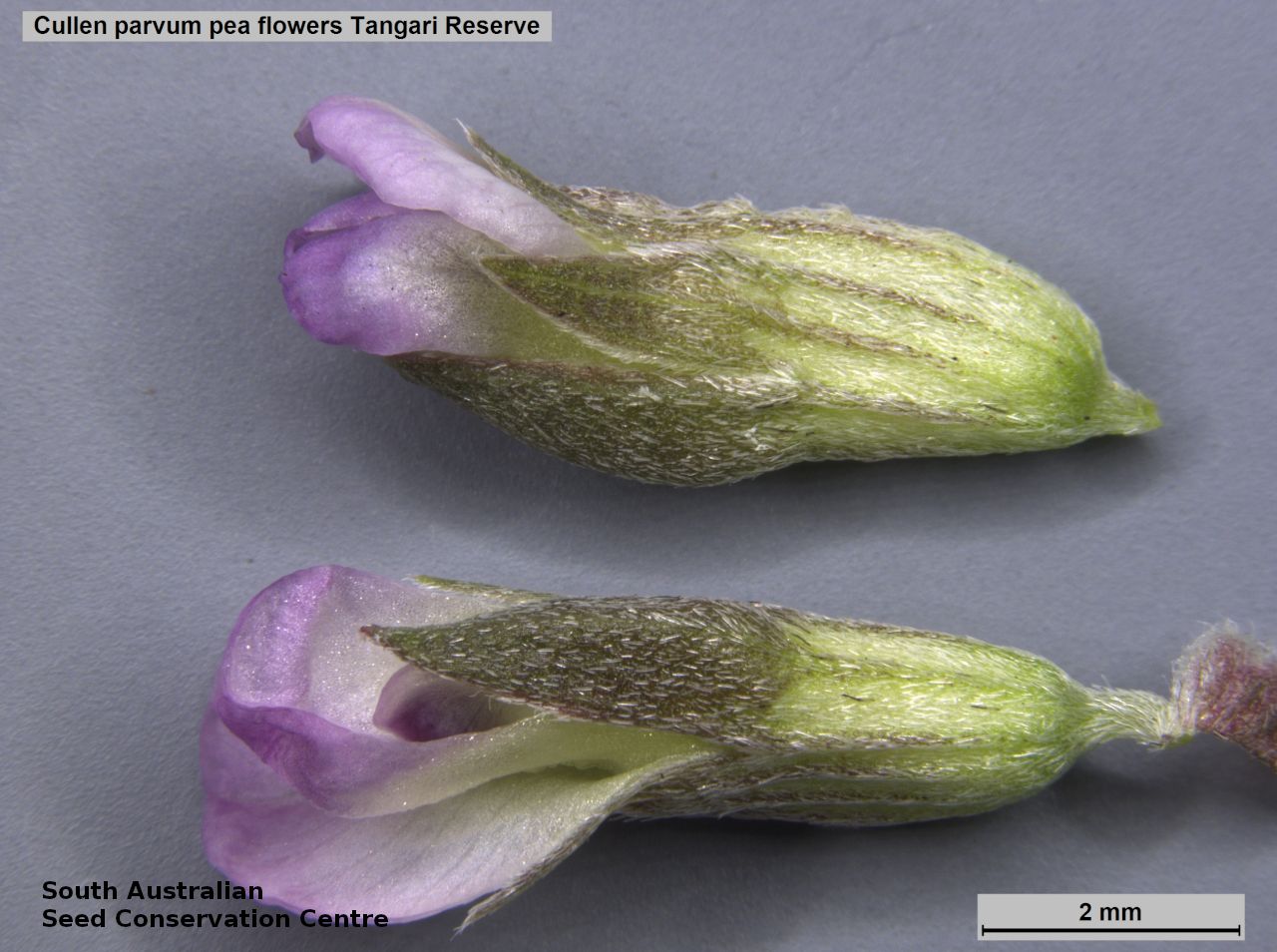
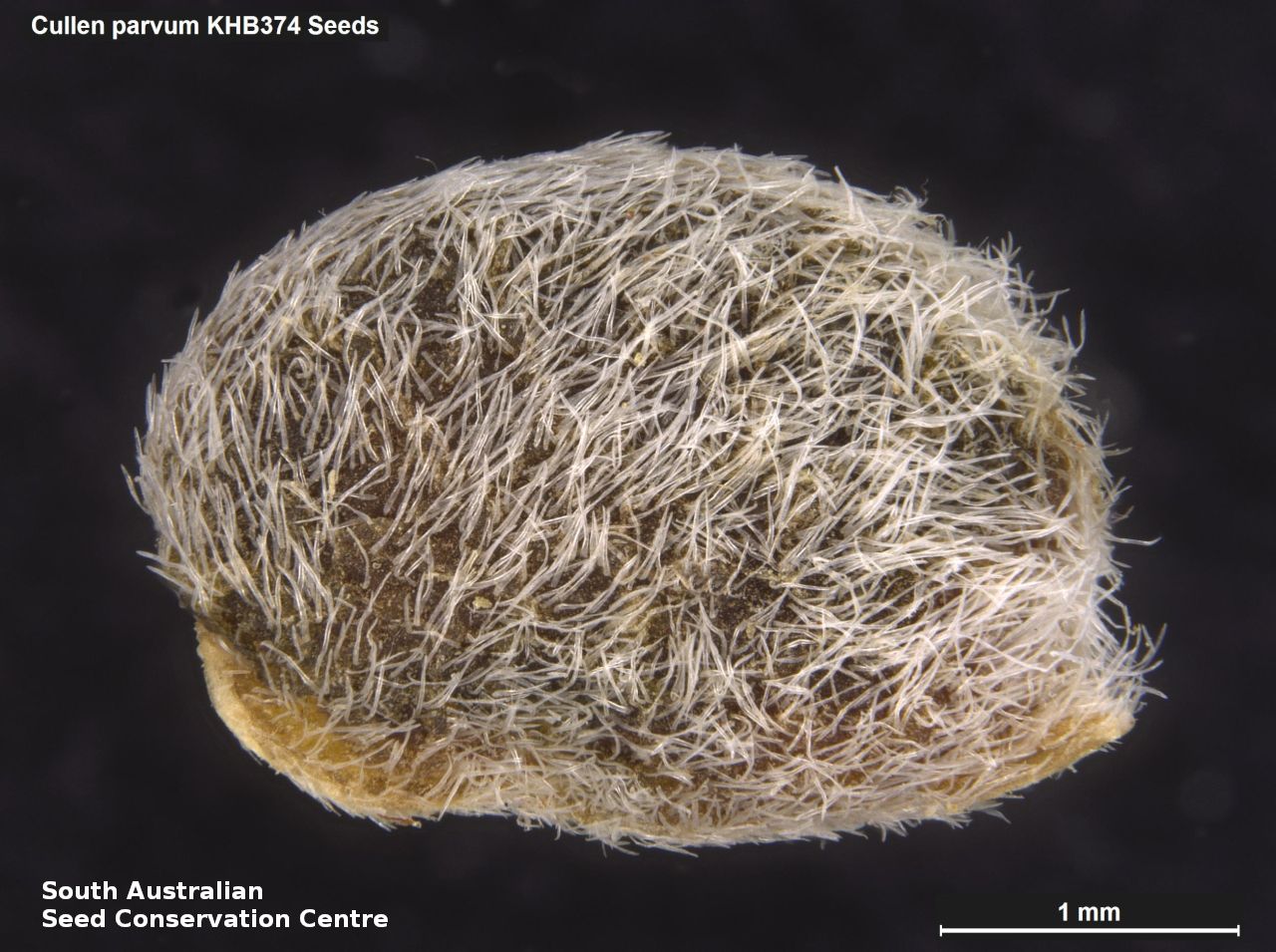
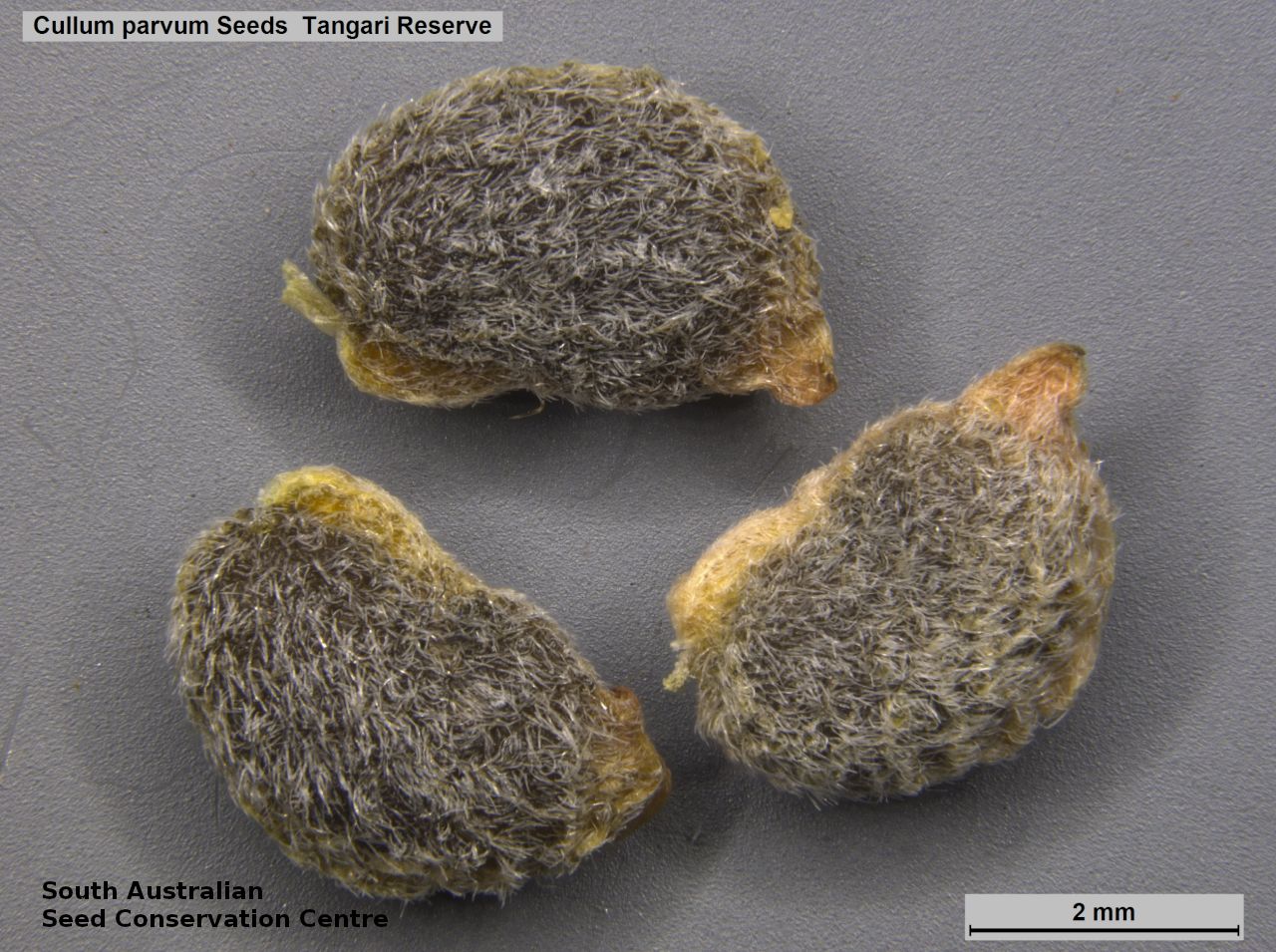
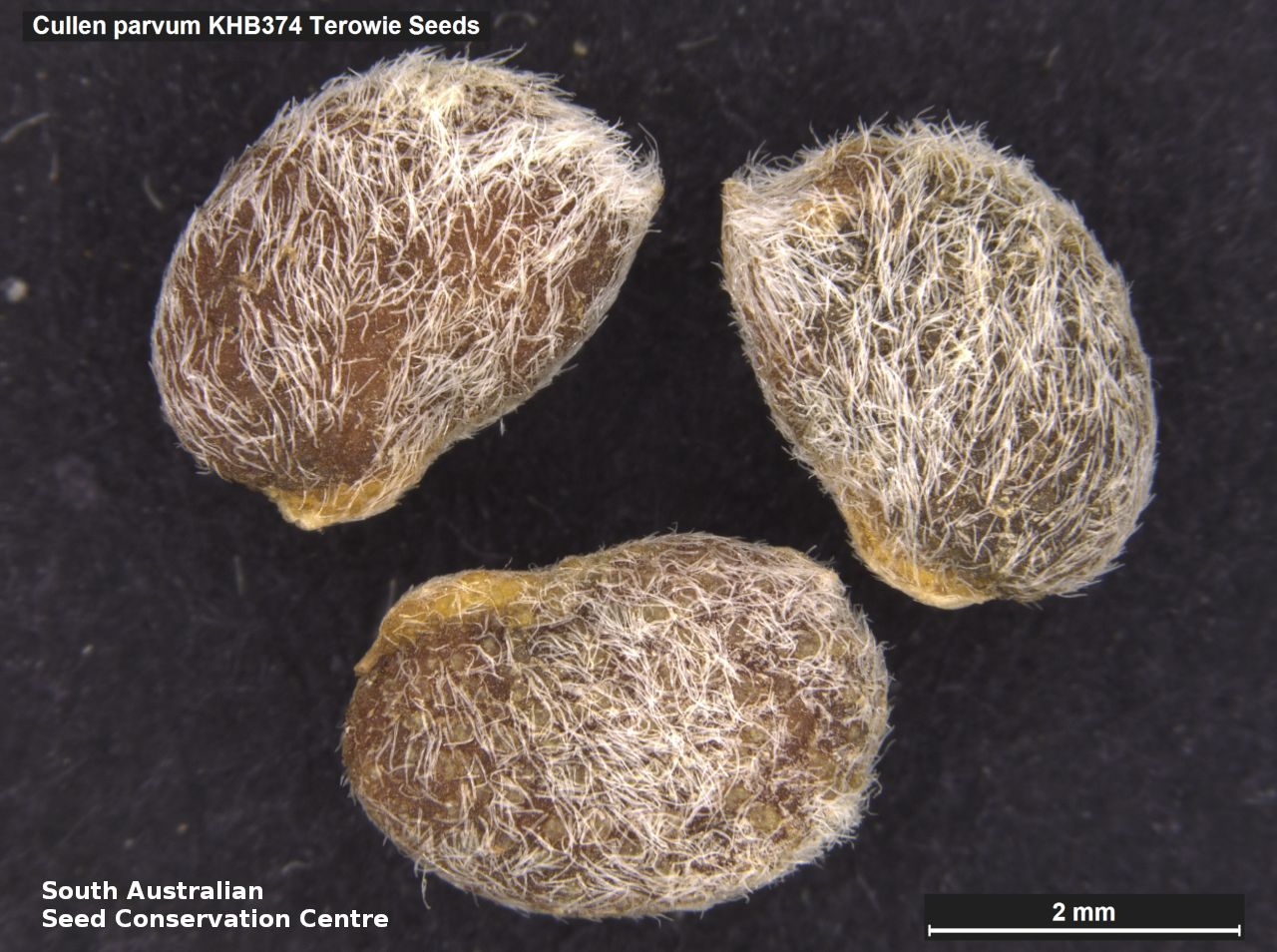
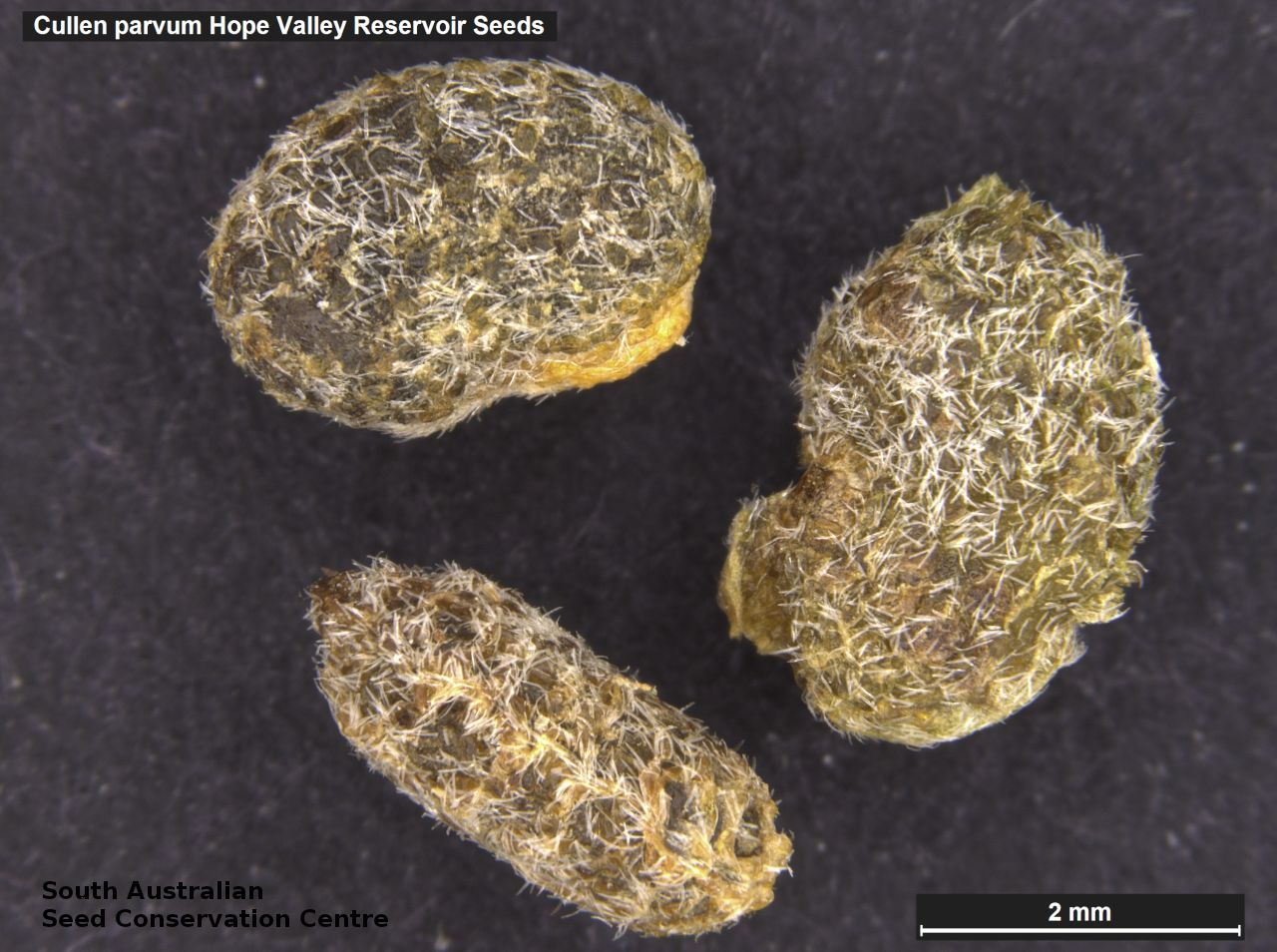
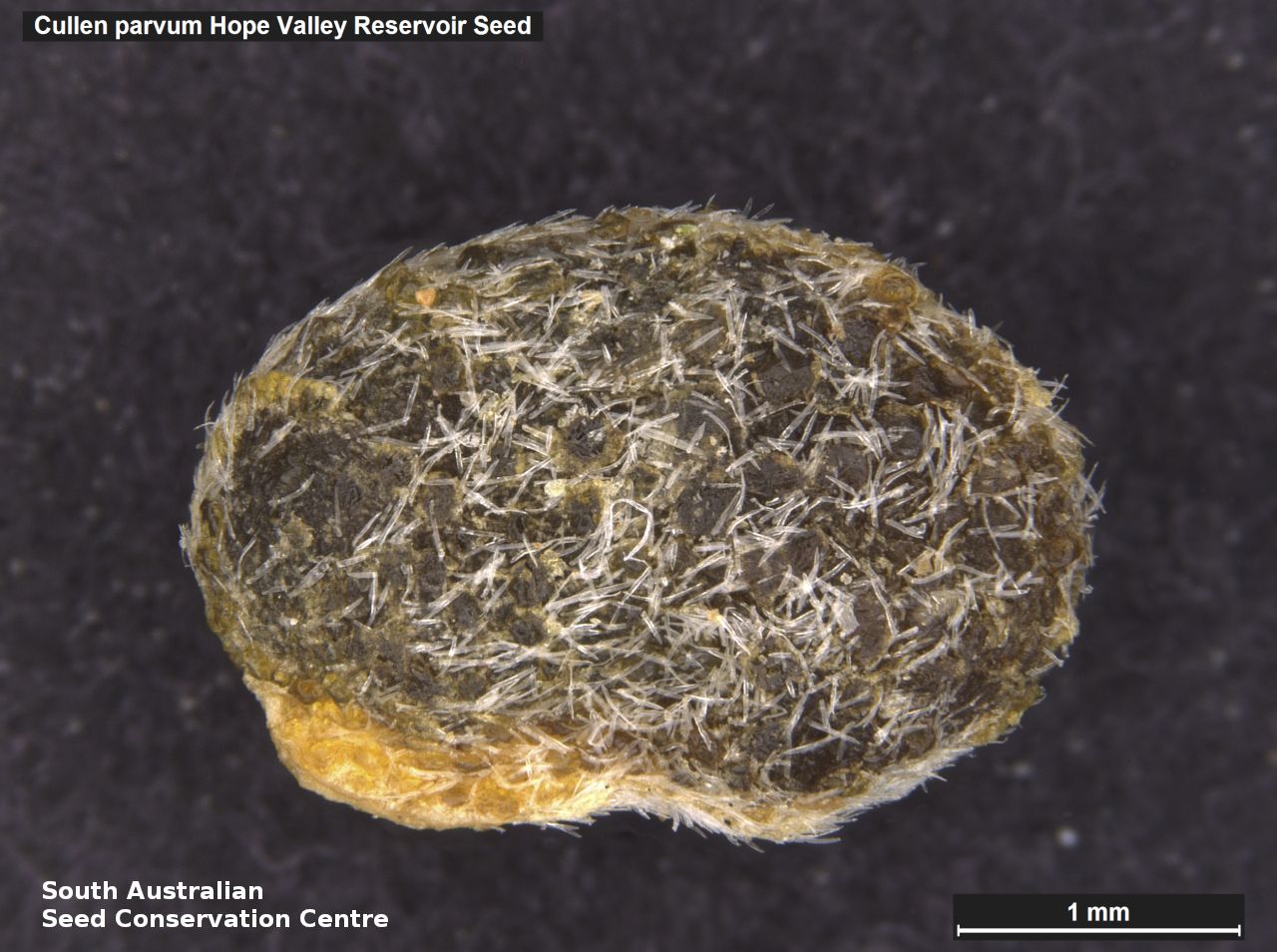
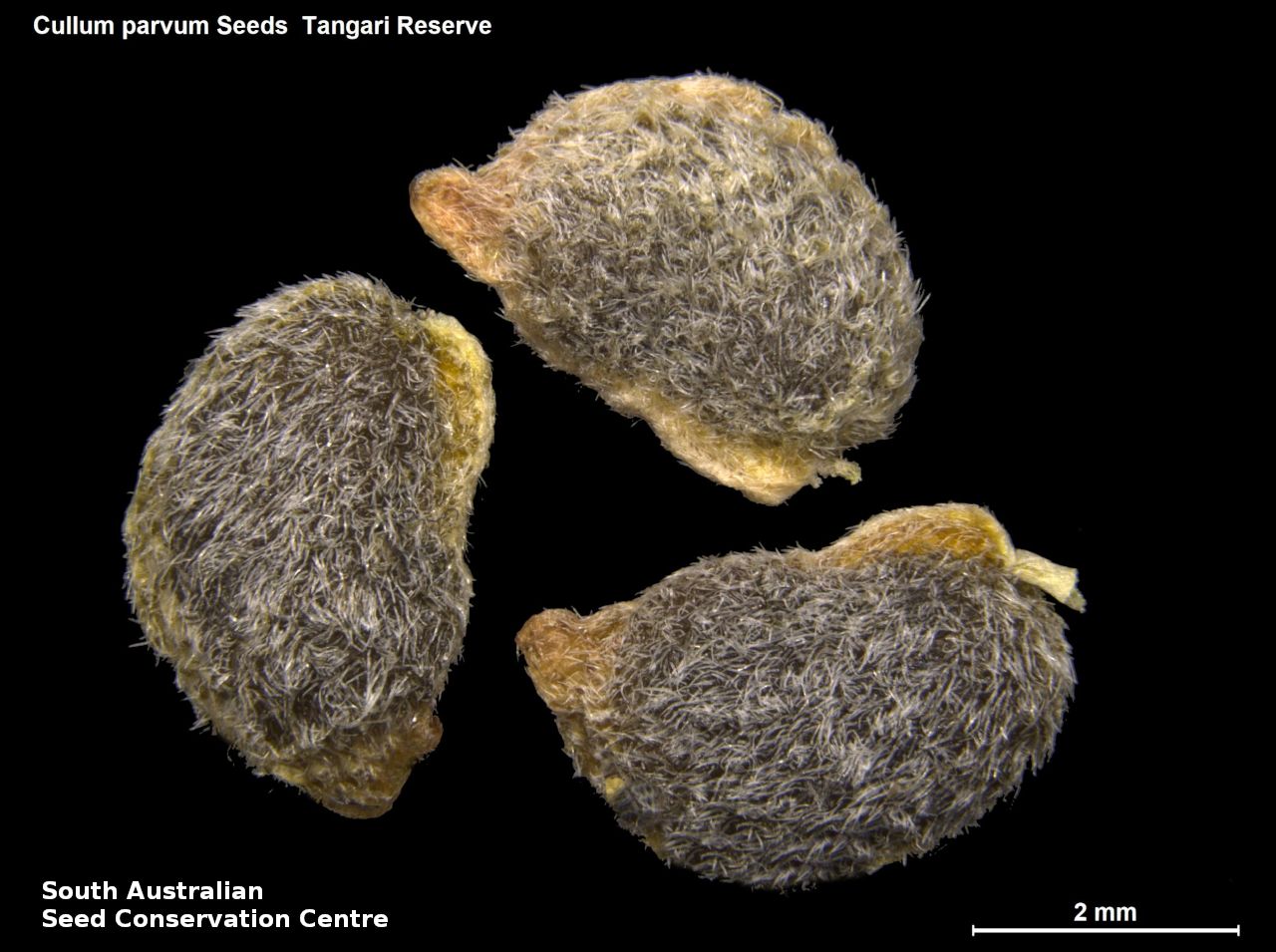
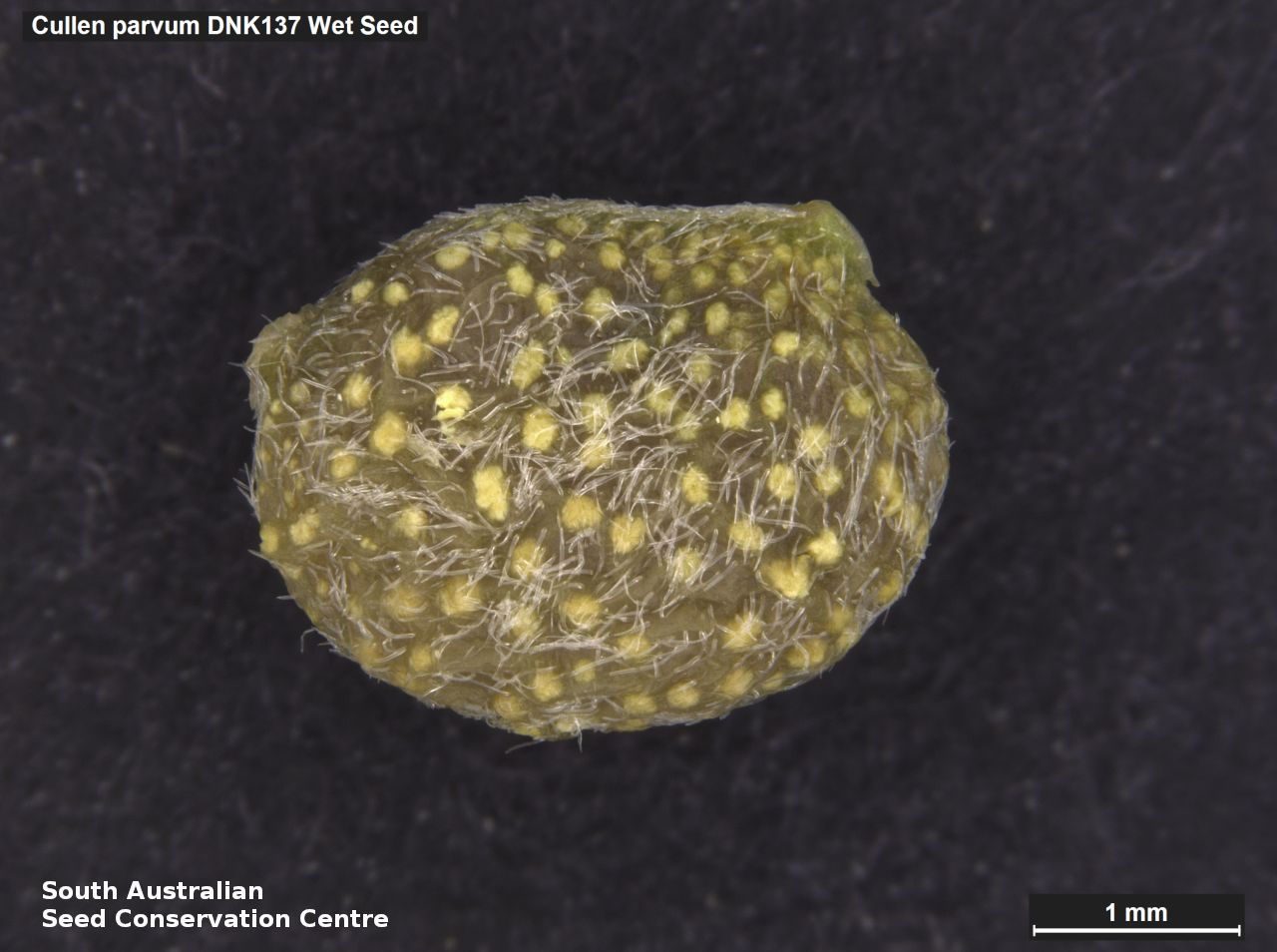
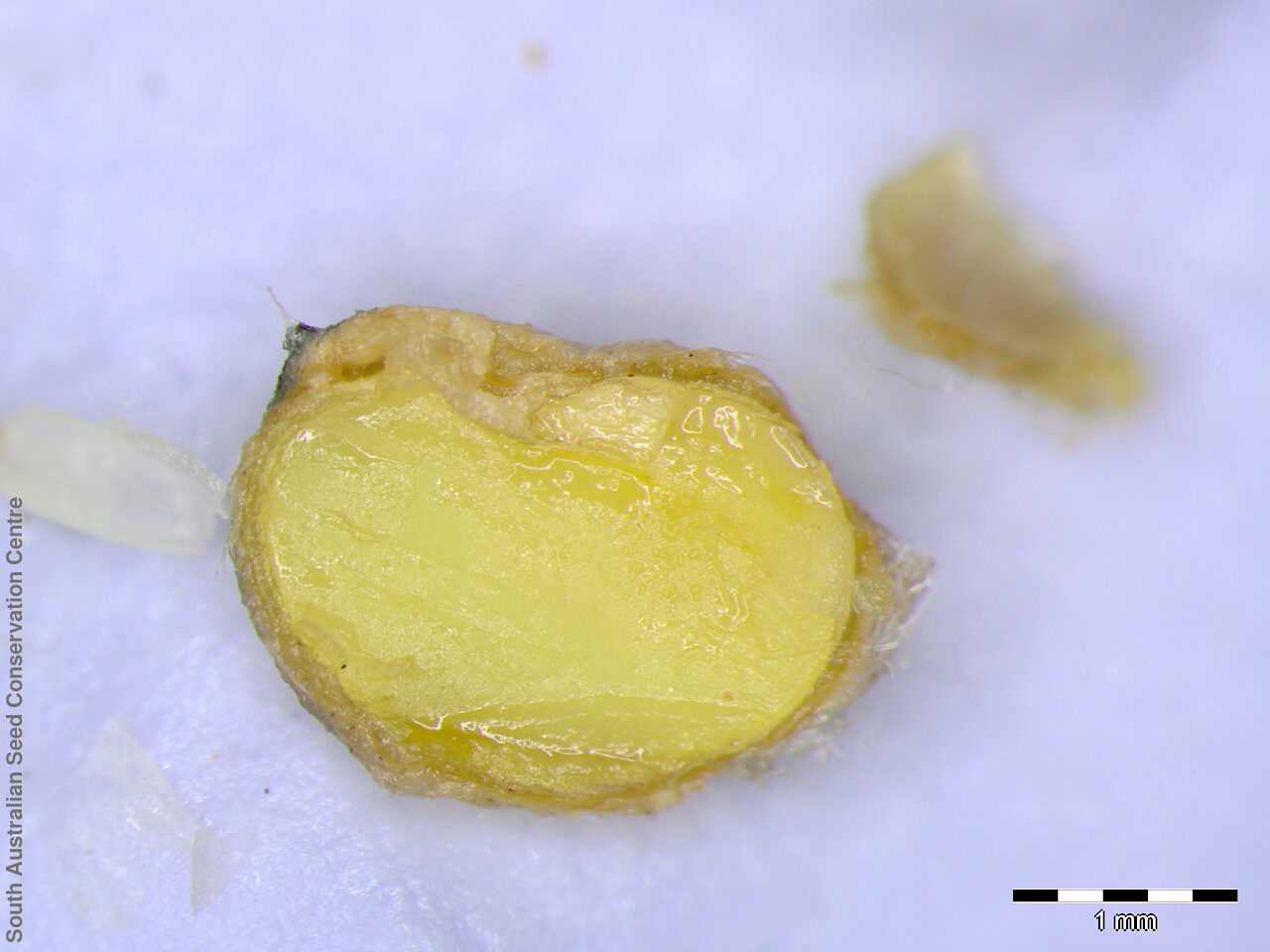
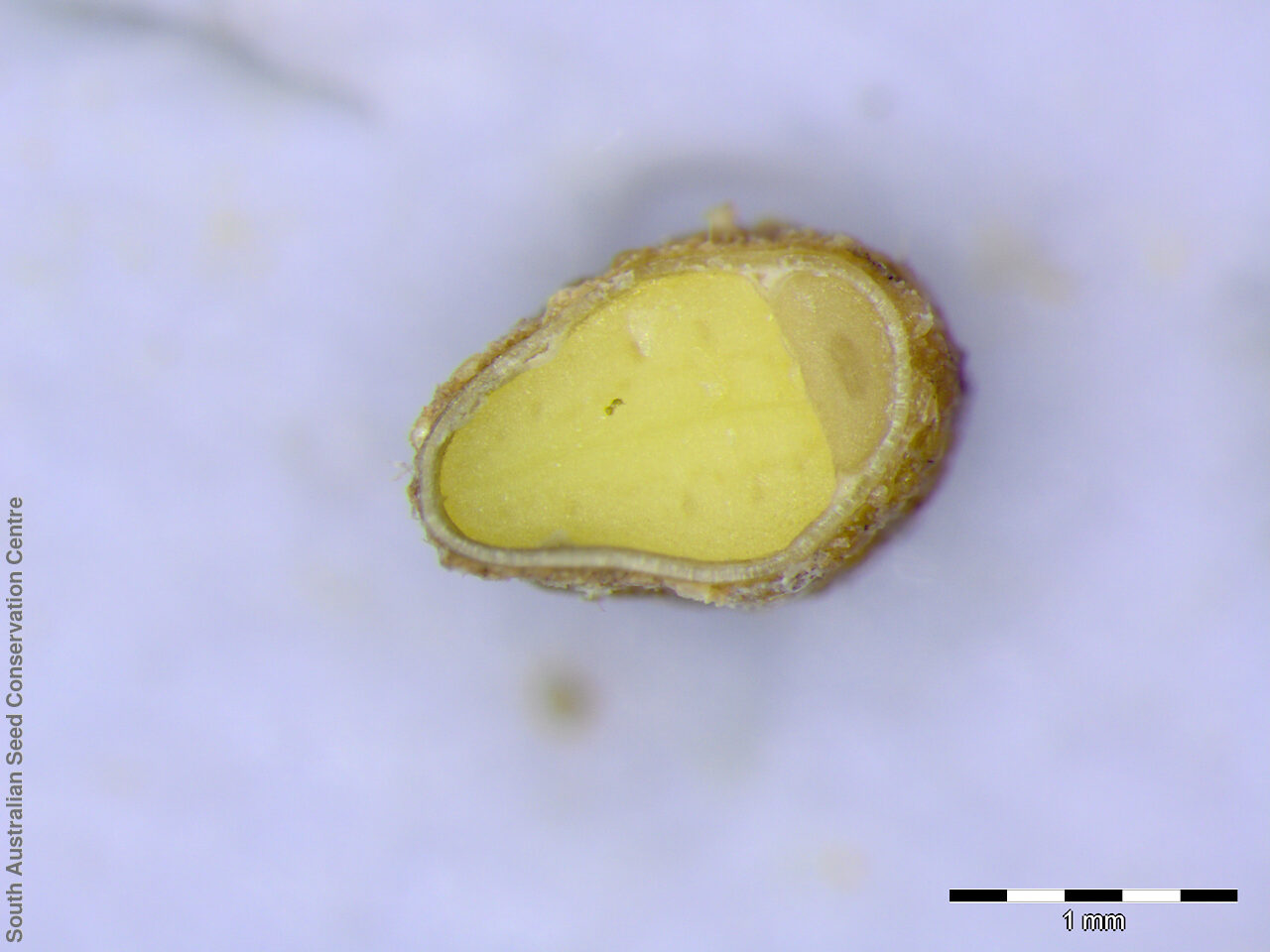

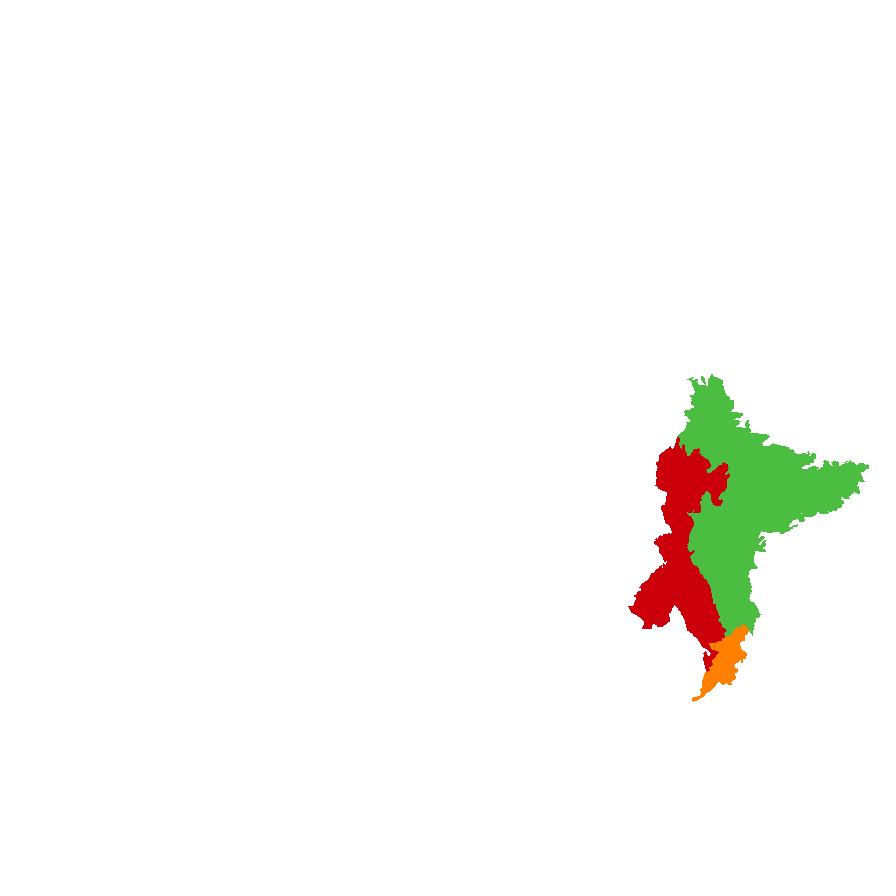
Botanical art
Prior names
Psoralea parva
Common names
Small Scurf-pea
Small Psoralea
Etymology
Cullen named after William Cullen (1710-1790), a Scottish physician and chemist who lectured at the University of Glasgow on botany, among other things . Parvum from the Latin 'parvus' meaning small', referring to the species' habit.
Distribution and status
Found in the southern Flinders Ranges to the Mount Lofty Ranges in South Australia growing in grasslands, grassy woodland or open forest vegetation dominated by Eucalyptus species on alluvial plains, creeks, ephemeral pools and river channels. Also found in New South Wales and Victoria. Native. Very rare in South Australia. Very rare in the other States.
Herbarium regions: Flinders Ranges, Eastern, Northern Lofty, Murray, Southern Lofty, Green Adelaide
NRM regions: Adelaide and Mount Lofty Ranges, Northern and Yorke, South Australian Arid Lands, South Australian Murray-Darling Basin
AVH map: SA distribution map (external link)
Plant description
Trailing perennial herb to 50cm. Leaves on 3-5 cm petioles; three lanceolate or oblanceolate to oblong leaflets to 25 mm long and 6 mm wide, sparsely covered with hairs. Flower-spike long with up to 30 blue-pink, lilac or almost white pea-flowers. Flowering between October and December. Fruits are black ovoid pod to 5 mm long, hairy with one seed inside. Seeds are brown bean-shaped seed to 4 mm long and 2 mm wide, with round warty projection and covered in white hairs. Seed embryo type is bent.
Seed collection and propagation
Collect seeds between December and March. Collect maturing pods, those that are fat, turning black and contain a brown seed inside, by running your hands along the fruit-spikes. Place the pods in a tray and leave to dry for 1 to 2 weeks or until the pods begin to split. Then rub the dried pods to dislodge the seeds. Use a sieve to separate any unwanted material. Store the seeds with a desiccant such as dried silica beads or dry rice, in an air tight container in a cool and dry place. From two collections, the seed viability was average to high, ranging from 60% to 90%. This species has physical dormancy that needs to be overcome for the seed to germinate (e.g. nicking or softening the seed coat).
| Location | No. of seeds (weight grams) | Number of plants | Date collected | Collection number Collection location | Date stored | % Viability | Storage temperature |
|---|---|---|---|---|---|---|---|
| BGA MSB | 3,000 (15 g) 3,000 (15 g) | 1000 | 7-Feb-2005 | DJD110 Northern Lofty | 31-Mar-2006 | 90% | -18°C |
| BGA | 840 (4 g) | 40+ | 11-Mar-2010 | KHB374 Eastern | 1-Jun-2010 | 60% | -18°C |
| BGA | 400 (1.62 g) | 50+ | 1-Mar-2016 | KHB Northern Lofty | 2-May-2017 | N/C | -18°C |
| BGA | 410 (2.2 g) | 12-Dec-2016 | Hope Forest Southern Lofty | 7-Jul-2022 | 90% | -18°C | |
| BGA | 1,960 (14.285 g) | 20+ | 14-Dec-2021 | TST1490 Southern Lofty | 7-Jul-2022 | 90% | -18°C |
| BGA | 6,200 (34.336 g) | 50+ | 10-Nov-2022 | TST1490 Southern Lofty | 20-Jun-2023 | 95% | -18°C, -80°C |
Number of plants: This is the number of plants from which the seeds were collected.
Collection location: The Herbarium of South Australia's region name.
% Viability: Percentage of filled healthy seeds determined by a cut test or x-ray.